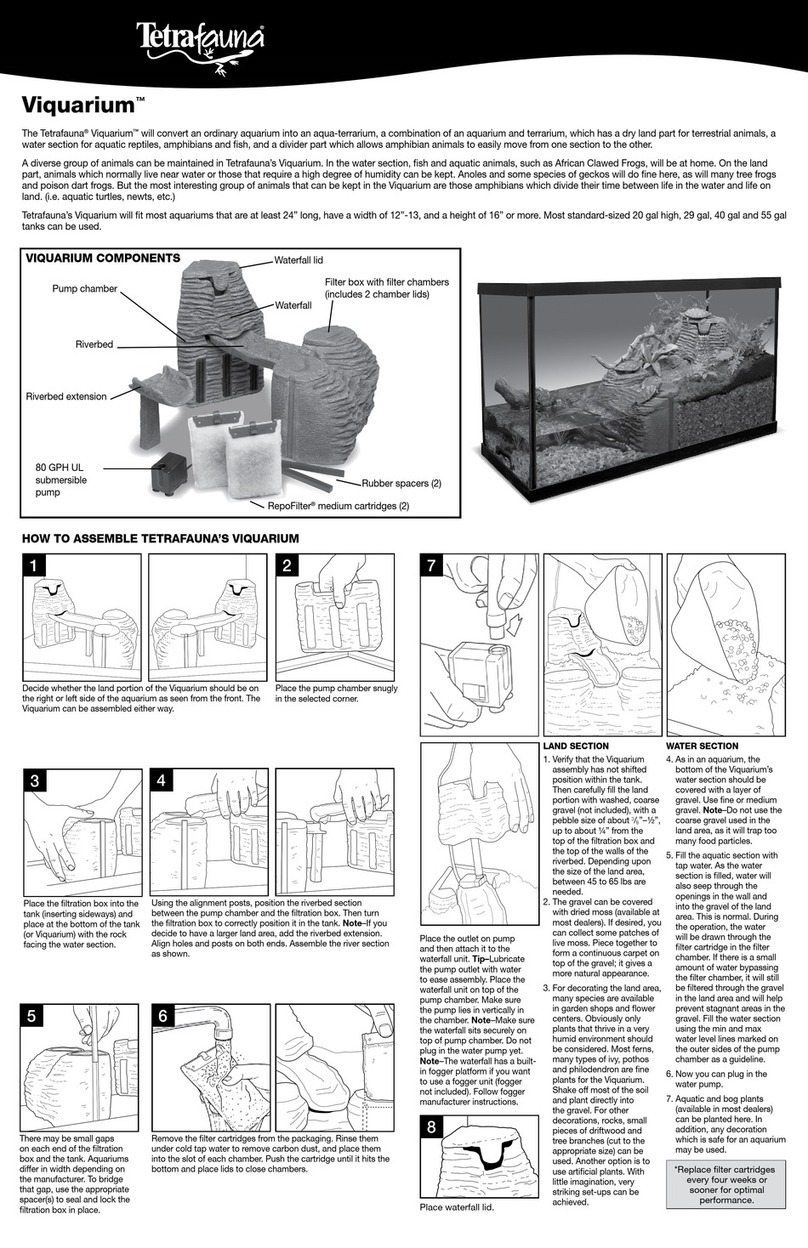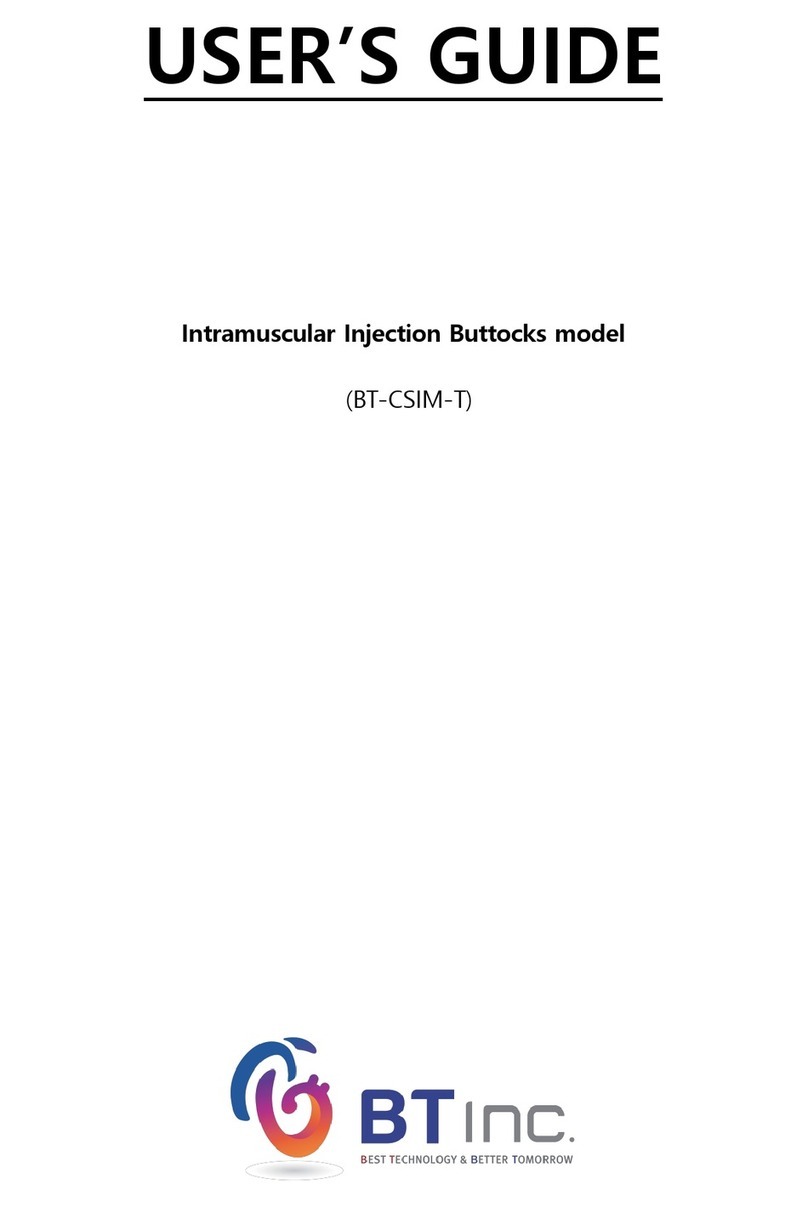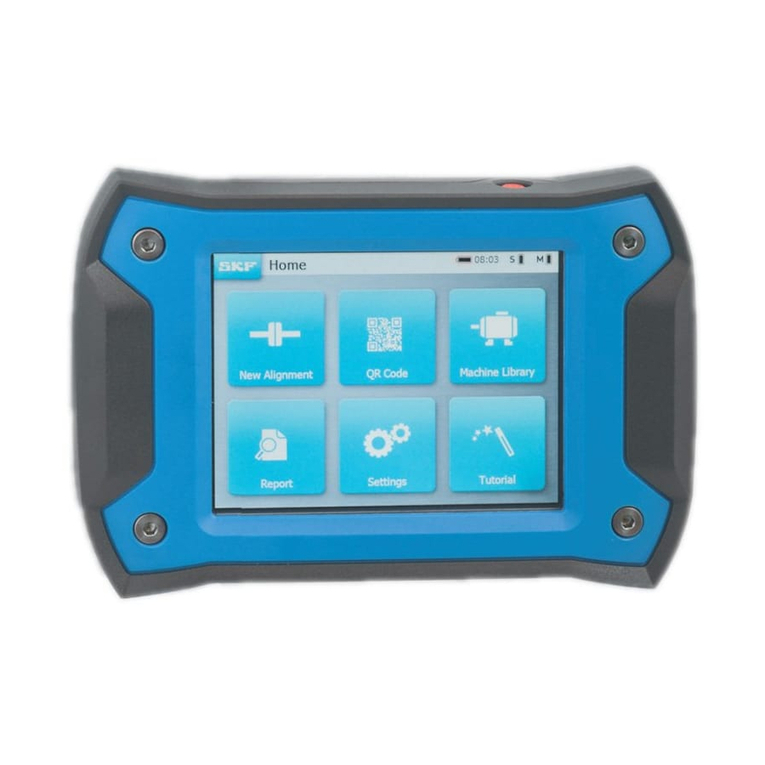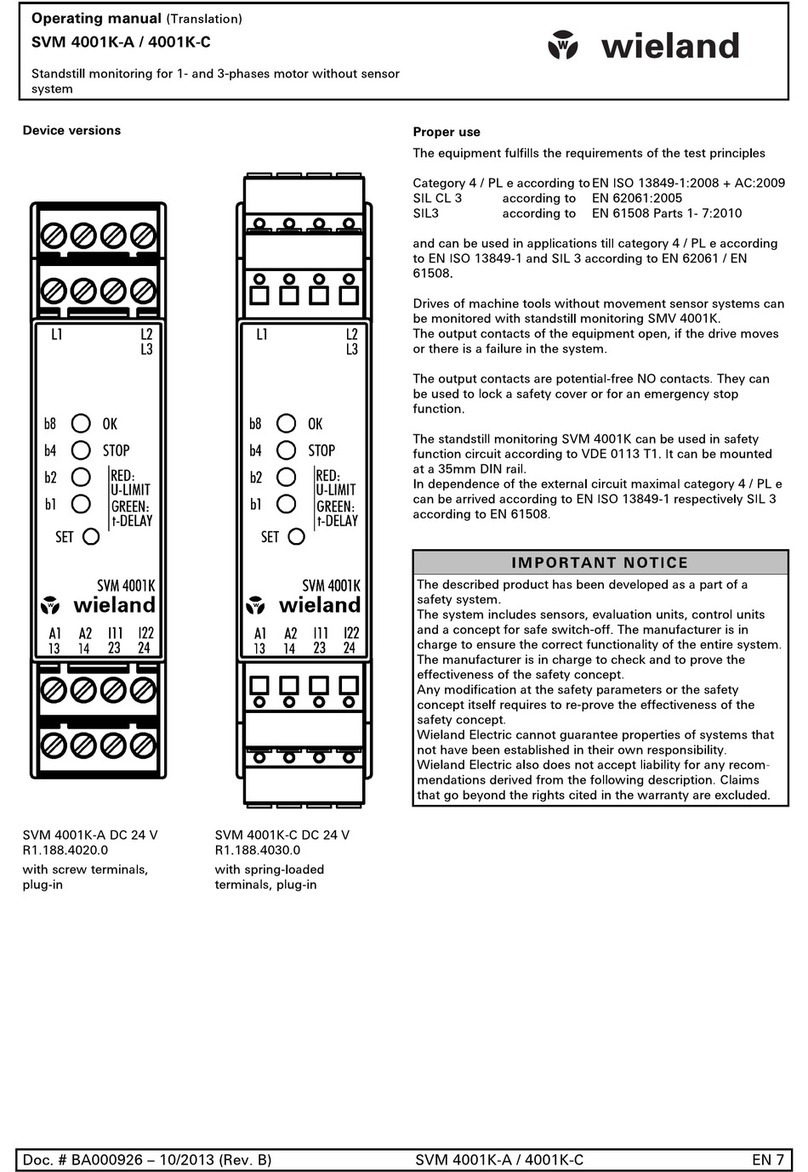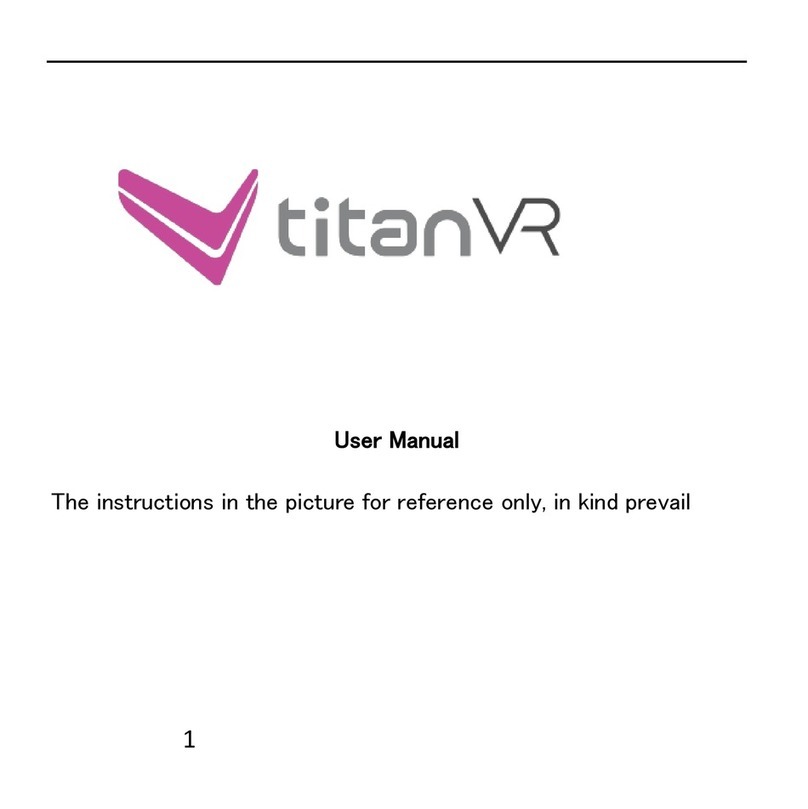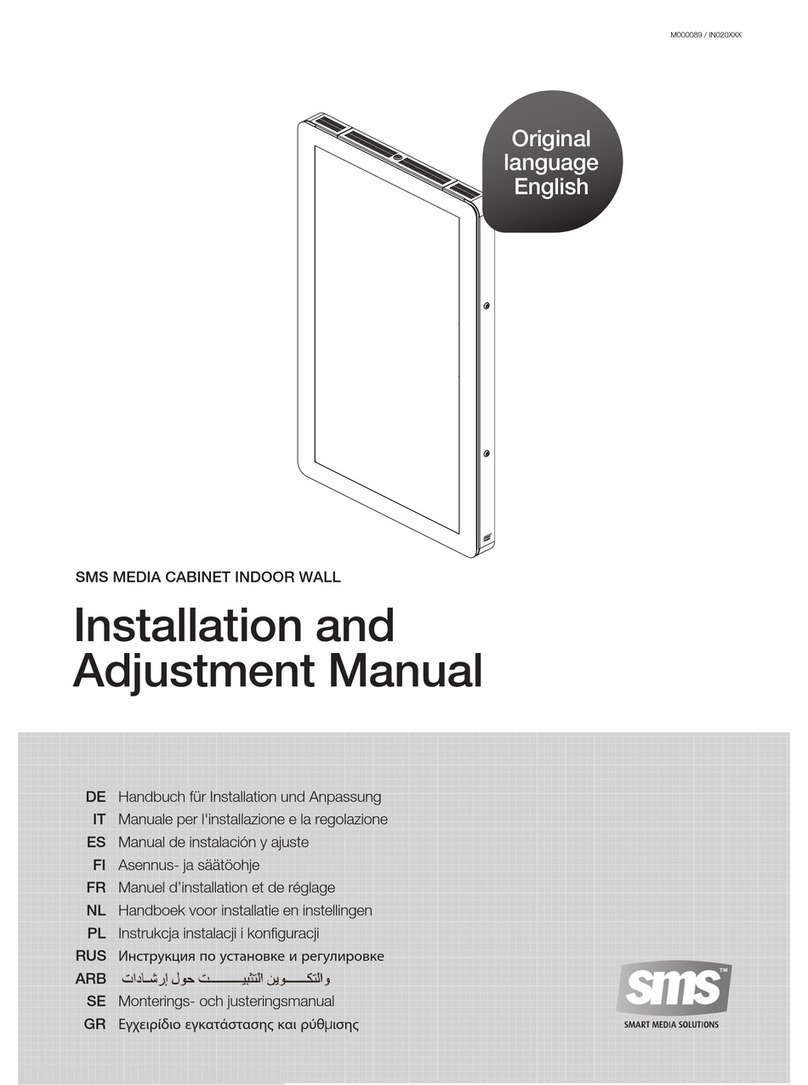Dectron LD Series User manual

DS and LD Series Dehumidifiers
Installation Manual
Dectron Co. Dectron.com

INM.XX.X.00 i April, 2018
Table of Content
C - General Information C-1
D - Delivery and Storage D-1
Receiving checklist. D-1
Shipping Damage handling D-1
Storage D-2
E - Mechanical Installation E-1
Lifting and Rigging E-1
General Mechanical Installation Requirements E-2
o General Placement of the Equipment E-2
o Indoor Dehumidifier Installation E-2
o Outdoor Dehumidifier installation E-2
Louvers Installation E-3
Field-Installed Outdoor Air Filter Rack Installation E-3
Outdoor Air and Exhaust “Door/Louver” Assembly Installation E-4
Outdoor Condenser and Fluid Cooler Mechanical Installation E-5
Mechanical Installation - Special Cases E-8
o Frame-mounted Main Blower(s) Shipping Brackets E-8
o “Split-Deck” Dehumidifier – Mechanical Field Disassembly and Assembly E-9
o “Split-Cut” Dehumidifier – Mechanical Field Assembly E-10
F - Ductwork Connection F-1
Ductwork Layout Considerations F-1
Duct Connection – General Considerations F-1
Duct Connection – Special Cases F-2
G - Piping Connection G-1
Piping Connection – General Considerations G-1
Condensate Drain Connection and P-trap Installation G-1
Pool Water Heating Connection G-2
Outdoor Air Condenser Piping G-3
Fluid Cooler Piping G-5
Other Piping Systems and Special Cases G-7
o Space Heating and Space Cooling Hydronic Systems G-7
o Gas-Fired Space Heaters G-7
o “Split-Cut” Dehumidifier – Piping Assembly G-7
o Remote gas Boiler Package Installation and Piping Connection G-8

April, 2018 ii INM.XX.X.00
Table of Content (cont-d)
H - Electric Connection: Power, Control and Communication H-1
Electrical Connection – General Consideration H-1
Equipment Main Power Connection H-1
Outdoor Air Condenser and Fluid Cooler Power and Control Connection H-2
Field Wiring – External Control and Communication H-2
o
Fire/Smoke Detecting System Interlock H-3
o
Operator Panel Local and Remote Installation H-3
o
External BMS and WebSentry Communication H-4
Field Wiring – Special Cases H-6
o
“Split-Deck” Dehumidifier – Electrical Field Disassembly and Assembly H-6
o
“Split-Cut” Dehumidifier – Electrical Field Assembly H-6

C – General Information
INM.XX.X.00 C-1 April, 2018
General Information
This manual provides basic information about various installation aspects of the applicable Dectron Co. (Dectron)
dehumidifier and its additional and auxiliary systems and devices (outdoor condenser, fluid cooler, communication
interfaces, etc.)
Important information regarding operation, maintenance, and start up can be obtained at Dectron (see Contact Us
below).
Operating Safety (Warnings, Cautions, and Notes)
FOR YOUR SAFETY: READ BEFORE PERFORMING ANY INSTALLATION OR OTHER TASKS!
Only qualified technicians should install, operate, maintain or service mechanical equipment
including Dectron’s dehumidification system.
Make sure to read this manual before performing any installation tasks to familiarize yourself
with the equipment as well as with any potential hazards. Always exercise caution!
Beware of high pressures and chemicals!
• Dehumidifiers, equipped with compressors, contain refrigerant under high pressure; oil is
also contained in the compressor and refrigeration circuit(s)
• Some dehumidifiers may also contain other liquids such as glycol mixtures and pool water
The following warnings, cautions, and notes appear throughout this manual and referenced documentation
whenever special care must be taken to avoid potential hazards that could result in equipment malfunction or
damage, personal injury, or death.
WARNING
Indicates a potentially hazardous
situation which could result in
serious injury or death if handled
improperly.
CAUTION
Indicates a potentially hazardous
situation which could result in
moderate injury or equipment
damage if handled improperly.
Note
Indicates a situation that could
result in equipment damage or
improper/ineffective operation if
handled improperly.

C – General Information
April, 2018 C-2 INM.XX.X.00
Reference and Additional Information
For safe, efficient and problem-free operation, it is critical to handle the dehumidifier (as well as related systems
and components) properly at each step - from receiving and storage to installation and start up. Relevant
information can be found in the respective documents (Operation and Maintenance Manual, Start Up Package,
etc.) provided with the dehumidifier.
This manual and other related documents can be also obtained at Dectron (see Contact Us below).
Warranty
The Dectron standard warranty statement can be found in the Operation and Maintenance Manual, provided with
the equipment (also available at Dectron – contact factory as needed).
Contact Us
Headquarter
Dectron Company
5685 Rue Cypihot
Saint Laurent QC, H4S1R3
Canada
Phone:
1.888.DECTRON
1.800.676.2566
US: 770.649.0102
Canada: 514.336.3330
Fax:
US: 770.649.0243
Canada: 514.337.3336
Dectron Co Online
Main website:
http://www.dectron.com
General Inquiries:
Service/ Parts inquiries:
ServiceMail@dectron.com
WARNING! Any work (installation, start up, service, maintenance, repair, etc.) on any mechanical
equipment (dehumidifier, outdoor condenser, fluid cooler, etc.) must be performed in accordance with
respective Dectron recommendations as well as submittal documentation, local Codes and Regulations, and
appropriate field practices. Failure to do so could result in personal injury, equipment damage or malfunction,
and will void equipment warranty. Only qualified and properly trained individuals should perform tasks on this
equipment.
Attention: Warranty Conditions and Coverage.
NOTE. Dectron equipment is provided with comprehensive conditional warranty coverage. Any warranty work
to be reimbursed must be approved by Dectron Service Team prior to work commencing. Installation, start up,
maintenance etc. are not within warranty scope.
Refer to the Dectron standard warranty statement for more details on warranty conditions, scope and coverage.
Attention: Equipment Proper Usage.
CAUTION! Dehumidifier is NOT intended, and, therefore, NOT to be used, to condition (heat, cool,
ventilate etc.) premise that is still under construction. Such usage may cause equipment premature wear, poor
performance and potential failure afterwards and will void the warranty!

D – Shipping and Storage
INM.XX.X.00 D-1 April, 2018
Delivery and Storage.
Receiving Checklist
Dectron inspects and fully tests each piece of equipment before it ships from the factory; however, the equipment
may suffer damage in transit.
It is highly recommended to thoroughly check for both visible and concealed damage upon the equipment arrival
and before signing the receiving papers:
Visually inspect exterior of the equipment for damages (scratches, dents, missing elements, etc.)
Verify the proper operation of latches and hinges on all access doors
Inspect all coils for damage to the fin surface coating, headers or coil connections
Manually rotate the fan wheel to ensure free movement of the shaft, bearings, and drive
Inspect the fan housings for any foreign objects
Inspect and test all piping for possible shipping damage
Check the tightness of bolts on the fan structure and coils
Inspect fan isolator shipping brackets
Shipping Damage Handling
Dectron ships freight on board (FOB), meaning that the equipment belongs to the customer as soon as the delivery
truck leaves the factory.
Shipping Damage Handling Instructions:
Note the damage in detail on the freight bill and bill of lading.
Take clear photographs of the damaged components, areas, and portions of the equipment.
Obtain a claim form from the carrier, fill it out, and return it promptly. Report all claims of shipping damage to
the carrier immediately and coordinate a carrier inspection if necessary.
Contact Dectron Service Team (see Contact Us above) to notify of the noted damage.
o Have the equipment serial number (8-digit) on hand to provide to Service Team. The serial number
can be found on the equipment’s main label or bill of lading.
o Note: it is the receiver's responsibility to provide reasonable evidence that damage was not incurred
after delivery.
o Do not attempt to repair the equipment without consulting with Dectron Service Team.
Note: Dectron is not responsible for any shipping damage. Should the equipment arrive damaged, follow the
instructions below to resolve the situation. Delivery cannot be refused on the basis of shipping damage.

D – Shipping and Storage
April, 2018 D-2 INM.XX.X.00
Storage
Protection from the elements is required for any equipment that will be stored on a job site or holding area
before installation.
For long-term storage, a controlled indoor environment is highly recommended.
All factory-applied shipping protection should be removed before the equipment is put into storage. Shipping
protection material is provided by the factory for shipping only – it is not a suitable protection for short or
long-term storage.
If long-term storage is required, warranty aspect should be considered. Refer to the Warranty section of
Operation and Maintenance Manual for more details. Please contact Dectron if you have any questions.

E – Mechanical Installation
INM.XX.X.00 E-1 April, 2018
Mechanical Installation
Lifting and Rigging
Use spreader bars for lifting to prevent equipment damage. Use cables (chains or slings) as shown on Pic. E.1.
o Use dehumidifier lifting brackets at
the base frame.
Each of the lifting cables (chains or slings)
must be capable to support the entire
weight of the equipment.
Determine the approximate centre of
gravity before lifting. See equipment design
drawings in the submittal documents for the
total weight and weight distribution.
Lifting cables (chains or slings) may not be of
the same length. Adjust as necessary for an
even lift.
Do not lift equipment in windy conditions.
Do not raise equipment overhead with
personnel below.
Test lift the equipment 24 inches to verify
proper operation of lifting machinery and
positioning of lift points such that the lifted equipment is level.
To avoid damage, do not attach intake or exhaust hoods prior to lifting
“Split-Cut” Dehumidifier Lifting
Some dehumidifiers may, if requested, be shipped in sections to be assembled on site.
Never assemble split sections before lifting them to the installation location.
o Always lift sections separately, as received from the factory.
Lift each section using its lifting lugs/brackets.
Pic. E.1
WARNING! Lifting and rigging must be done by trained professionals in accordance with proper lifting
techniques and safety procedures. Proper lifting machinery and tools and safety equipment (PPE) must be used.
Improper lifting may cause equipment damage, serious injury, or death. Dectron Technologies Inc. is not
responsible for the improper use of lifting equipment.
WARNING! All work must be done by qualified personnel in accordance with local and national Codes,
Standards and Regulations as well as respective design/submittal documentation and Dectron recommendations.
CAUTION! Obtain all necessary documentation (Dectron documentation, submittal documentation,
drawings, etc.) and familiarise yourself with it before performing installation or any other related tasks.

E – Mechanical Installation
April, 2018 E-2 INM.XX.X.00
General Mechanical Installation Requirements
Equipment (dehumidifier, outdoor condenser, fluid cooler, etc.) should be installed in accordance with respective local Codes and
Regulations as well as applicable submittal documentation. There are several general key installation points:
General Placement of the Equipment
Equipment must be installed on a firm, levelled surface, with provision for vibration absorption.
Service and operational clearances to the equipment must be always maintained.
o Access to ALL doors, louvers, filter racks, access ports and covers must not be restricted. Some
installations may require cat-walks (over ducts, pipes, etc.) or other means of access to otherwise
restricted side of the equipment.
o Dehumidifier: may require up to 30” clearance for proper operation, service and maintenance;
o Outdoor Condenser (OACC)/Fluid Cooler (OAFC): may require up to 36” clearance all around and up
to 96” clearance above fan for proper operation, service, and maintenance.
Avoid installing OACC/OAFC in a pit, where it’s surrounded on all four sides by walls,
structures, etc. If such an installation cannot be avoided, the following must be maintained:
the min. clearances must be increased to double width of the OACC/OAFC all around;
surrounding structures’ height must not exceed the height of the OACC/OAFC.
Indoor Dehumidifier Installation (dehumidifier, installed in mechanical room)
No chemicals allowed to be stored in the same mechanical room;
o other stored materials must not block access to the equipment for service and maintenance.
Mechanical room must have operational floor drain.
Ceiling-suspended installation: support dehumidifier from (underneath) the base; refer to submittal
documentation for dehumidifier weight distribution for proper selection and positioning of support.
Outdoor Air (OA) intake box. Some dehumidifiers with outdoor intake option, may have an OA intake box,
mounted onto the OA intake opening or provided separately to be field-installed. If latter is the case:
o install box over the OA opening, attach it to the dehumidifier with provided self-tapping screws.
o Attach OA duct to the box (see Ductwork
Connection chapter).
o Control/electrical contractor: connect
control wire harness to the OA box devices
(actuators, sensor etc.) inside the junction
box (see Pic. E.2) – follow the junction box
legend and dehumidifier wiring diagram.
Outdoor Dehumidifier Installation
Roof Curb. If the dehumidifier is installed on a roof curb, it must utilize curb gasket material (to create a
moisture and weather seal between the dehumidifier and a roof curb).
o ATTENTION! Before placing onto a roof curb, consider accessibility underneath the dehumidifier for
various mechanical and electrical systems connections (power, drain, other piping, etc.)
o ATTENTION! It is not recommended to use space within a roof curb as a supply or return duct.
Consider the direction of strong prevailing winds – it may negatively affect equipment operation (cross-flow of
exhausted and fresh air and/or flue gases, elements (rain, snow) aspiration into the OA opening, etc.)
NOTE. For equipment-specific data (dimensions, clearances, accessibility, etc.) refer to equipment submittal
documentation, Operation and Maintenance Manual, and equipment labels and stickers.
Pic. E.2
Junction box

E – Mechanical Installation
INM.XX.X.00 E-3 April, 2018
Outdoor Dehumidifier – Louvers Installation
To protect outdoor-installed dehumidifier openings (outdoor air intake, exhaust air discharge, etc.) against
elements, louvers are installed or provided separately for field installation. If latter is the case:
Uncrate/unwrap provided louver and place it over respective opening/damper (Pic. E.3):
o Larger louvers require two persons to lift and place the louver
o Dehumidifier with larger louvers also have louver support lip over the damper.
Adjust louver position – shift it slightly left or right as needed to ensure louver side walls and access panels do
not interfere with damper linkage, actuators, filter racks, sensors, etc.
Once the louver is positioned properly, attach it to the dehumidifier with the provided self-tapping screws on
all four sides. If access panels were removed for louver installation, reattach the panels and close the latch.
Outdoor AND Indoor Dehumidifier - Field-installed OA (outdoor air intake) Filter Rack Installation
If the Outdoor Air intake (OA) filter rack is shipped separately, it should be attached to respective opening/damper
once dehumidifier is installed. This may apply to both, indoor and outdoor installed dehumidifiers.
Attach filter rack to the damper with provided self-tapping screws; position rack as shown on Pic. E.4.
Once the rack is installed, insert/install OA sensor (thermistor or combo sensor, as shown in the picture)
between the damper and the filters; ensure that the sensor will not interfere with the damper blades motion.
OA sensor
Pic. E.4
Pic. E.3
Support lip
Cover panel

E – Mechanical Installation
April, 2018 E-4 INM.XX.X.00
Outdoor Dehumidifier – Outdoor Air and Exhaust “Door/Louver” Assembly Installation
For shipping purposes, the OA and Exhaust Louver(s) may be shipped on the top of the dehumidifier and will
require field installation (see Pic. E.5). This normally applies to outdoor DS020-DS040 series dehumidifiers.
Remove the door/louver assembly (a) from the roof and place it in front of the respective opening; normally,
the air damper with pre-wired actuator is mounted within the louver – use caution not to damage wiring.
o The OA door/louver assembly is normally placed on the roof near/above OA opening. The Exhaust
door/louver assembly, respectively – near/above Exhaust opening.
Release louver latches (b) on both sides to open the louver and access bolts (c) later;
Place door support brackets (d) on the dehumidifier floor into the opening,
Lift the door and place it, then tighten bolts (c) to secure the door.
o OA damper would also have a filter rack, attached to it.
Lift the hood in place and lock the latches (b).
Pic. E.5
(a)
(b)
(d)
(c)

E – Mechanical Installation
INM.XX.X.00 E-5 April, 2018
Outdoor Condenser (OACC) and Fluid Cooler (OAFC) Mechanical Installation
The requirements outlined in General Placement of the Equipment (see above) apply to all models of OACC/OAFC.
It is recommended to anchor light-weighted OACC/OAFC to the horizontal mounted surface (concrete pad etc.).
This applies to all OACC models and some OAFC models (NG-Z and NG-V-01, -02, -11 and -12).
Outdoor Condensers and Fluid Coolers Field Assembly – models NC-Z, NC-B and NG-Z.
The NC-Z and NC-B Series outdoor condensers as well as NG-Z Series fluid coolers can be provided in vertical or
horizontal airflow configuration and may require field assembly of respective mounting support:
Vertical airflow configuration (equipment is mounted on a horizontal surface such as ground, roof, etc.):
OACC model NC-Z and OAFC model NG-Z assembly is shown on Pic. E.7A below:
o Uncrate/unwrap the equipment and legs.
o Install the four provided legs (a) onto the equipment (leg is to be placed inside in the corner)
Double condenser/cooler (b) would have six legs provided – place two additional legs in the
middle – refer to picture.
o Align all four holes in each leg and equipment corner and attach legs with provided bolts, washers (legs
have factory-installed nut-certs); tighten all bolts.
o Ensure that the equipment is levelled and firm; affix the legs to the surface (concrete slab, etc.);
anchors/fasteners for surface mounting are NOT included.
Pic. E.7A
NOTE. Do NOT exceed distance limitation between the dehumidifier and OACC or OAFC – it may result in
equipment incorrect operation and/or failure. Before finalizing OACC or OAFC placement/location, refer to
respective dehumidifier main label, as well as submittal documentation and Fluid Cooler Piping and Outdoor
Condenser Piping
chapters of current manual (see further). Contact the factory if needed.

E – Mechanical Installation
April, 2018 E-6 INM.XX.X.00
OACC model NC-B assembly is shown on Pic. E.7B below:
o Uncrate/unwrap the condenser and mounting kit.
o Assemble left and right mount legs as shown with provided bolts, nuts, and washers (except for joint
point (a) – it must be bolted to the condenser)
o Align holes (a) and (b) in the mount legs with the holes in the condenser and attach them with provided
bolts, nuts and washers.
o Attach rear support braces to the condenser with provided self-tapping screws (c)
o Install the optional front cross piece (d) between left and right leg with provided bolts, nuts and
washers;
o Ensure that the assembly is straight, square and sturdy; tighten all bolts.
o Ensure that the condenser is levelled and firm; affix mount legs footings to the surface (concrete slab,
etc.); anchors/fasteners for surface mounting are NOT included.
Horizontal airflow configuration (equipment is mounted on a vertical surface such as a wall.). In this case, use the
same mount kit as above. Note that the mount legs are assembled slightly differently.
OACC model NC-Z and NC-B and OAFC model NG-Z assembly is shown on Pic. E.7C below:
o Uncrate/unwrap the equipment and mounting kit.
o Assemble left and right mount legs as shown with provided bolts, nuts, and washers (except for joint
point (a) – it must be bolted to the condenser/cooler)
Note that the cross-piece (b), that is to be attached to the equipment, is mounted differently
for NC-Z/NG-Z and NC-B.
o Before final assembly of equipment and mount legs, ensure following:
For Outdoor Condenser NC-B: electric box is positioned as shown – horizontal, with drip
protection bend (c) at the top;
For all Outdoor Condensers (NC-Z and NC-B): refrigerant connections are on the side AND
liquid line connection (refer to condenser labels) is the bottom one, (e).
o Align respective holes in cross-piece (b) and the holes in the equipment and attach them with provided
bolts, nuts, and washers.
o Attach rear support braces to the condenser with provided self-tapping screws (d)
o Ensure that the assembly is straight, square, and sturdy; tighten all bolts.
o Ensure that the condenser is levelled and firm; affix mount legs footings to the surface (wall, etc.);
anchors/fasteners for surface mounting are NOT included.
Pic. E.7B

E – Mechanical Installation
INM.XX.X.00 E-7 April, 2018
Pic. E.7C

E – Mechanical Installation
April, 2018 E-8 INM.XX.X.00
Mechanical Installation – Special Cases
Some equipment may have additional/optional arrangements – refer to submittal documentation and equipment
accompanying factory instructions.
Frame-mounted main blower shipping brackets.
For shipping purposes, larger (7 HP and up) direct-driven main blower frame springs are affixed with shipping
brackets (see Pic. E.8). This normally applies to LD series dehumidifiers only.
Upon installation remove ONLY lower bolt from all four corners (detail A) at the frame base - removing these
bolts ensures that the blower vibration is dampened correctly.
If the blower frame includes two blowers (stack), in addition to
base bolts removal (described above) remove ONE bolt from
each bracket at the wall springs (B).
(B)
Pic. E.8

E – Mechanical Installation
INM.XX.X.00 E-9 April, 2018
“Split-Deck” dehumidifier (“Double-Decker”) – mechanical field disassembly and assembly
If requested, “Double-decker” (stacked)
dehumidifiers are provided with means for site
disassembly (splitting top deck from the bottom
for shipping/delivery purposes) and assembly
afterwards. Refer to Disassembly and assembly
Instructions, provided with the dehumidifier!
Normally, there are two ways the top deck is
attached to the bottom (refer to the one
pertaining to your dehumidifier):
DS02D – DS15D indoor models: decks
attached with six to eight screws through
the top deck floor & bottom deck roof (see
Pic. E.9a):
o locate the plastic covers/plugs at the front (a) and back (b) of the dehumidifier and pop
them open to access screws;
o remove all the screws and lift the top deck.
o Once decks reassembled, reinstall removed screws and reinstall plastic covers.
DS08D – DS15D indoor/outdoor
models: decks attached with side
joining and lifting strips (see Pic.
E.9b):
o Locate and remove all
screws on joining strips
between the top and
bottom decks - on the
front (a) and back (b)
joining strips and on the
lifting bracket strips (c) on
the sides of the
dehumidifier.
o Once the dehumidifier is
installed and decks are
reassembled, make sure
to reinstall the removed
screws again.
o Remove as needed the lifting eye-hooks to allow for doors removal.
Make sure to also reassemble the other system connections (piping, wiring, etc.). Refer to respective chapters.
CAUTION!
Before removing top deck from the bottom,
ensure that ALL other system connections
(piping, wiring, etc.) are disassembled.
Pic. E.9a
Pic. E.9b
(a)
(a)
(
b
)
(
b
)
(
c
)

E – Mechanical Installation
April, 2018 E-10 INM.XX.X.00
“Split-Cut” dehumidifier – mechanical field assembly
Under special conditions, the dehumidifier may be split into two or more sections to ease the installation and
delivery process. Refer to the dehumidifier submittal drawings and Disassembly and Assembly Instructions,
provided with the dehumidifier (instructions include mechanical, piping, and electrical guidance for reassembly).
Place and align dehumidifier sections properly:
o To aid with proper placement, sections normally are labeled with sequential numbers (“1”, “2” etc.) –
ensure that each pair of adjacent sections at the split have same number (see Pic. E.10a).
o Before final assembly of sections – ensure piping proper alignment; plan for pipe joining.
Join sections with provided fasteners.
o Base angles (outside – see
Pic. E.10. b) are normally
bolted together with 3/8”
bolts and internal (walls,
floor, ceiling) angle (inside
– see Pic. E.10 c) are
normally attached with
5/16” bolts.
o Internal angles shape may
vary depending on
dehumidifier cabinet type.
o Ensure that all provided holes are used.
Install provided roof rib cap (see Pic. E.10 d) over each jointed roof rib and
attach it with screws; caulk the inner corner of roof rib cap prior.
Caulk all the joints (roof, floor, walls) after reassembly.
WARNING! DO NOT lift assembled dehumidifier. Lift each section separately and assemble once all
sections are placed where intended.
Pic.E.10a
Pic.E.10c
Pic.E.10b
Pic.E.10d

F – Ductwork Connection
INM.XX.X.00 F-1 April, 2018
Ductwork Connection
Ductwork Layout Considerations
Though ductwork layout is outside of scope of dehumidifier installation and duct connection to it, it is crucial to
have proper ductwork layout for proper air distribution throughout the premise and proper dehumidifier
operation. Proper ductwork layout encompasses, among others, following:
Supply air must be directed/properly distributed to:
o exterior windows and doors, skylights, etc.
o breathing zone at the deck level and water surface.
o remainder of the room to ensure there are no stagnant areas.
Return duct grille must be located where it will optimize the entire airflow pattern (central/equidistant
location of return grille, multiple return grilles if needed, etc.).
Air short-circuiting must be prevented – no supply air diffusers near the return.
Ensure grilles, diffusers and registers are delivering proper throw distance and CFM.
Maintain the required minimum OA intake along with negative pressure in the space (respective Exhaust Fan
and OA intake arrangement)
Where/if applicable, establish direct exhaust of humid/chemical laden air from the source (locate exhaust
grille above/close to spa, whirlpool, etc.).
Duct sock installation: sock must be levelled (hangers are at the same heights), stretched and not sagging.
Duct Connection – General Considerations
All duct connections should be done in accordance with local and national standards.
o Proper duct turns and transitions (sizing, distance, angles, turn vanes, etc.) should be used to minimize air
friction losses and turbulence and to ensure the highest fan efficiency.
o If space heater (electric heater, hot water coil or gas duct heater) is installed at the dehumidifier
supply air termination, heater becomes a point for the supply duct connection – ensure proper
duct transition, support, etc. is in place – refer to heater manufacturer guidance as needed.
o Flexible connectors (canvas collars, etc.) should be used to prevent (reduce) vibration and sound
propagation.
Ductwork should not interfere with other devices/systems operation and accessibility:
o fasteners (screws, etc.) attaching ducts to the damper, are not interfering with damper linkage,
actuator(s) wiring and mounting brackets etc.
o fasteners (screws etc.) are not interfering/penetrating any internal wiring, piping etc. possibly located
behind the surface(s) ductwork is attached to – verify visually before installation and after.
o damper actuator(s), filter racks, etc. are accessible/not blocked by the installed ductwork.
CAUTION! Obtain all necessary documentation (Dectron documentation, submittal documentation,
drawings etc.) and familiarise yourself with it before performing installation or any other related tasks.
Refer to dehumidifier submittal drawings for location and size of dehumidifier duct connections.
WARNING! All work must be done by qualified personnel in accordance with local and national Codes,
Standards and Regulations as well as respective design/submittal documentation and Dectron recommendations.

F – Ductwork Connection
April, 2018 F-2 INM.XX.X.00
Duct Connection – Special Cases
Supply Air ductwork connection – SA Temperature Sensor installation.
Some dehumidifiers may require SA (supply air) temperature sensor to be installed in the duct after duct is
connected.
In this case dehumidifier SA temperature sensor,
tagged “SUPPLY AIR TEMP SENSOR TO BE
INSTALLED IN DUCT” (see Pic. F.1), would be
attached to the side or roof of the dehumidifier -
such sensor is pre-wired to the dehumidifier
control board at the factory and needs to be
installed in supply ductwork.
Install sensor at least 2’- 4’ downstream
of the dehumidifier or externally
mounted space heater (if one is
controlled by the dehumidifier) in the
middle of the width of the duct.
Field-installed duct-mounted space heater.
If space heater (gas duct heater, hot water or steam coil, electric heater, etc.) is not packaged with the
dehumidifier and to be installed in the duct on site:
follow said space heater manufacturer installation instructions (duct transitions, distances, clearances,
support, direction, etc.), respective local codes and regulations and standard field practices.
Install space heater in the supply duct, downstream of the dehumidifier.
It is recommended for the space heater to be controlled by the dehumidifier control system (for efficient
operation and air temperature maintenance).
Gas-fired duct heater. Indoor-installed gas heater requires respective venting to be installed. Follow the
heater manufacturer recommendation and respective local codes to select and install the venting system.
Pic.F.1

G – Piping Connection
INM.XX.X.00 G-1 April, 2018
Piping Connection
Piping Connection General Considerations
Refer to the equipment main label and stickers at lines/piping termination to verify respective connecting
lines’ sizes, flow directions (IN/OUT) and system type (pool heating, space heating, etc.).
o Flow direction stickers at respective piping stubs refer to the equipment it’s attached to: IN – media
(water, refrigerant, etc.) entering the equipment, OUT – leaving the equipment.
o Select the line/piping size based on the equipment documentation (labels, drawings, etc.): diameters
of the dehumidifier or OACC/OAFC piping stubs may be different from the required line size.
Use proper materials and pipe joining methods, respective to given system (system media, pressure, etc.).
Use proper installation field practices and Code(s) requirements (proper piping support, no pipe-to-edge
contact, grounding/bonding, insulation, pressure testing, charging/filling, etc.)
As/where needed, ensure that proper isolation and balancing means (valves, circuit setters, etc.) are in place.
For water or water/glycol systems (pool water, space heating or cooling water, etc.) - provide proper means
for priming (filling), draining and aerating (bleeding the air from the system): install automatic air bleeding
valve(s) at each local top point of the system and drain/priming valves at the lowest point(s) of the system.
Condensate Drain Connection and P-trap Installation
Each dehumidifier drain pan condensate line must be directed to an external drain and equipped with a P-trap to
ensure proper drainage.
o If gravity disposal of condensate is not possible, use a condensate pump.
o If the drain line passes through an unconditioned/not-heated space, heat tracing is required to prevent the
condensate in the drain from freezing.
Dehumidifier condensate termination(s) (or it’s location) is normally marked with respective label, stating whether
given line is already equipped with a P-trap from the factory or not. If not, install a P-trap
P-trap installation:
o Make sure that each drain connection has a P-trap
o Make sure that there is only one P-trap installed (do not
double-trap).
o If soft piping material is used (braided hose, etc.)
- ensure the drain line is not sagging (this may
create “double-trapping effect” and prevent
condensate from proper drainage).
o Pitch the condensate drain line minimum of 1/8” per
linear foot and support the pipe with code-approved
hangers at least every 5 feet (see Pic. G.1).
CAUTION! When connecting the equipment to external mechanical and electrical systems, refer to
submittal documentation and equipment labels and stickers for piping connection details.
Pic.G.1
WARNING! All work must be done by qualified personnel in accordance with local and national Codes,
Standards and Regulations as well as respective design/submittal documentation and Dectron recommendations.
This manual suits for next models
1
Table of contents
Popular Other manuals by other brands
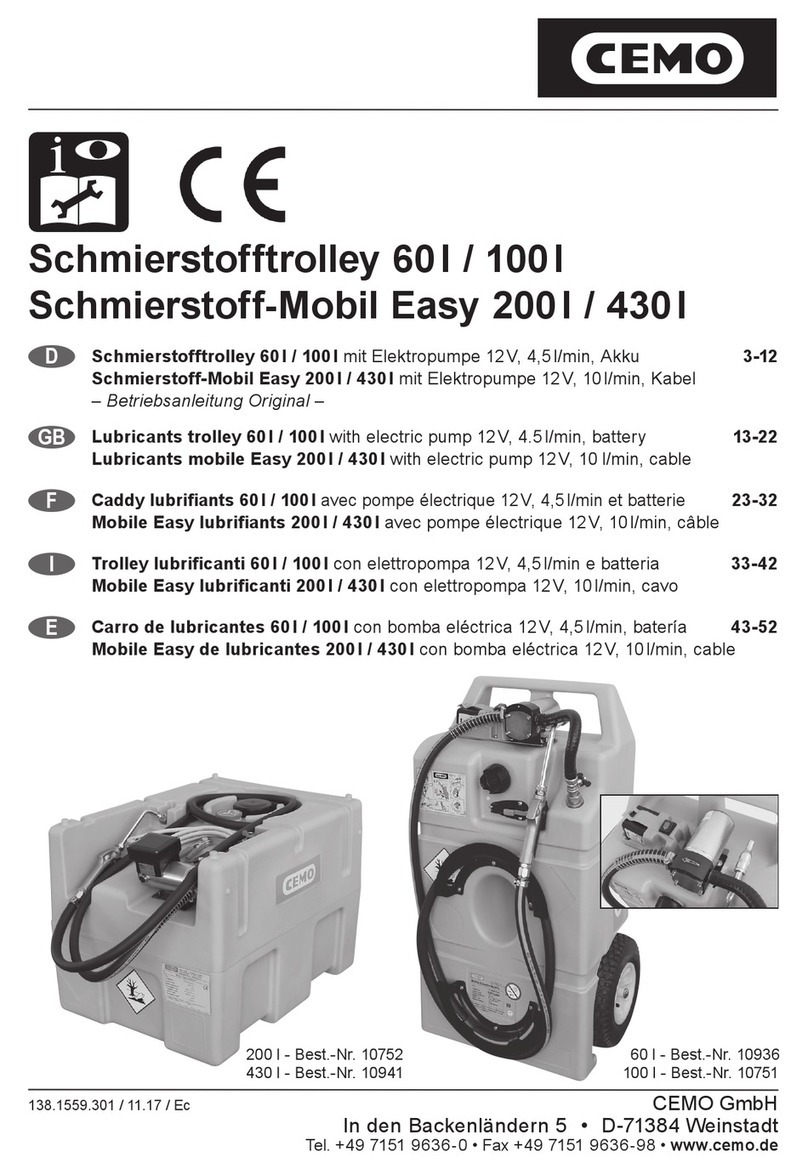
CEMO
CEMO Trolley 60 l AdBlue Car PRO operating instructions
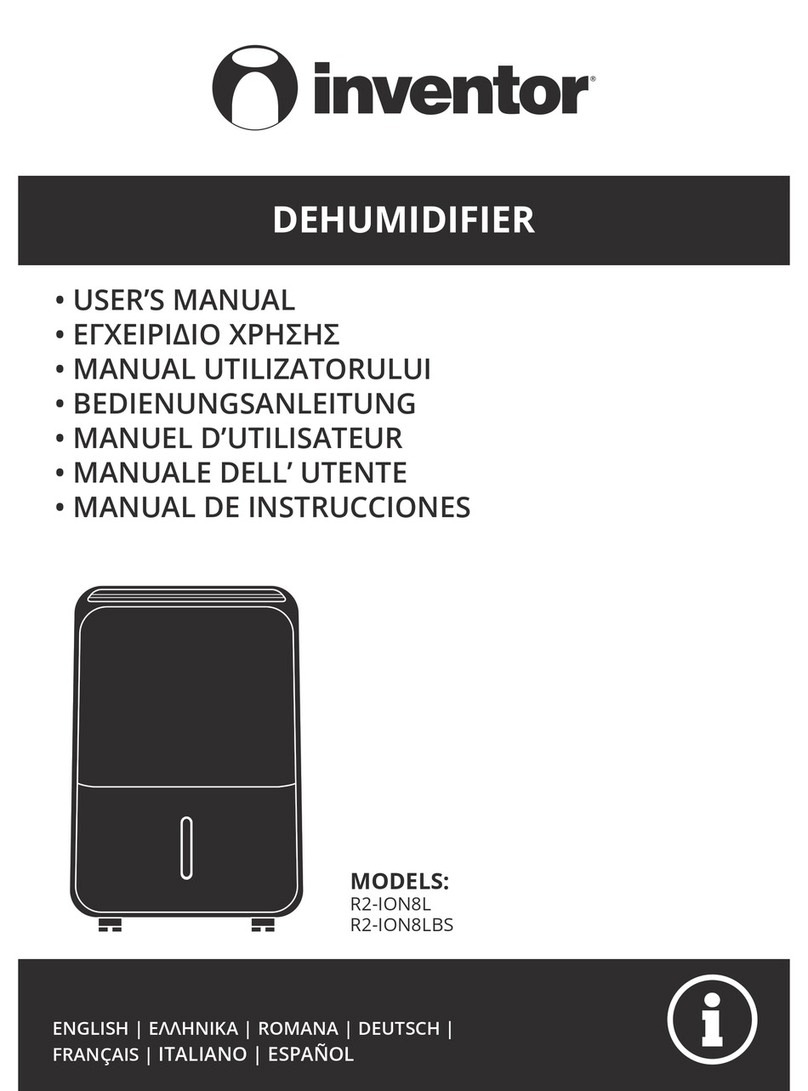
INVENTOR
INVENTOR R2-ION8LBS user manual

Deesse Pro
Deesse Pro Deesse Pro operating manual
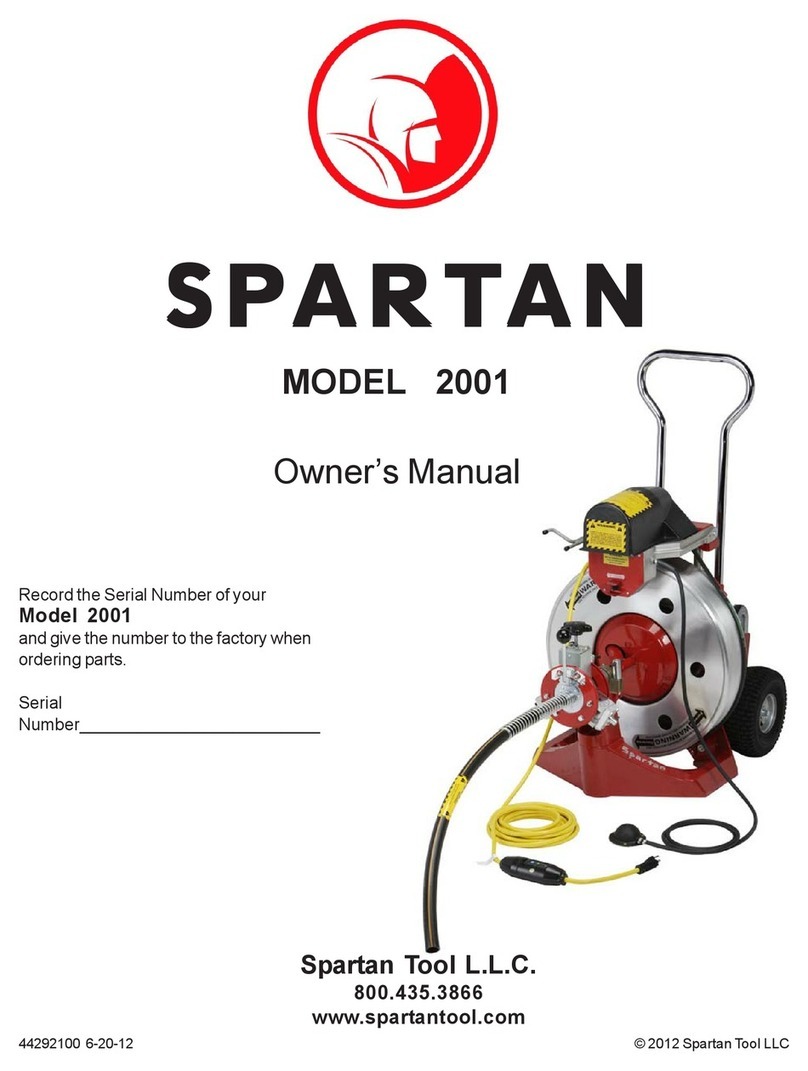
Spartan Tool
Spartan Tool 2001 owner's manual

Buyers Products Company
Buyers Products Company 5571200 Installation instructions manual
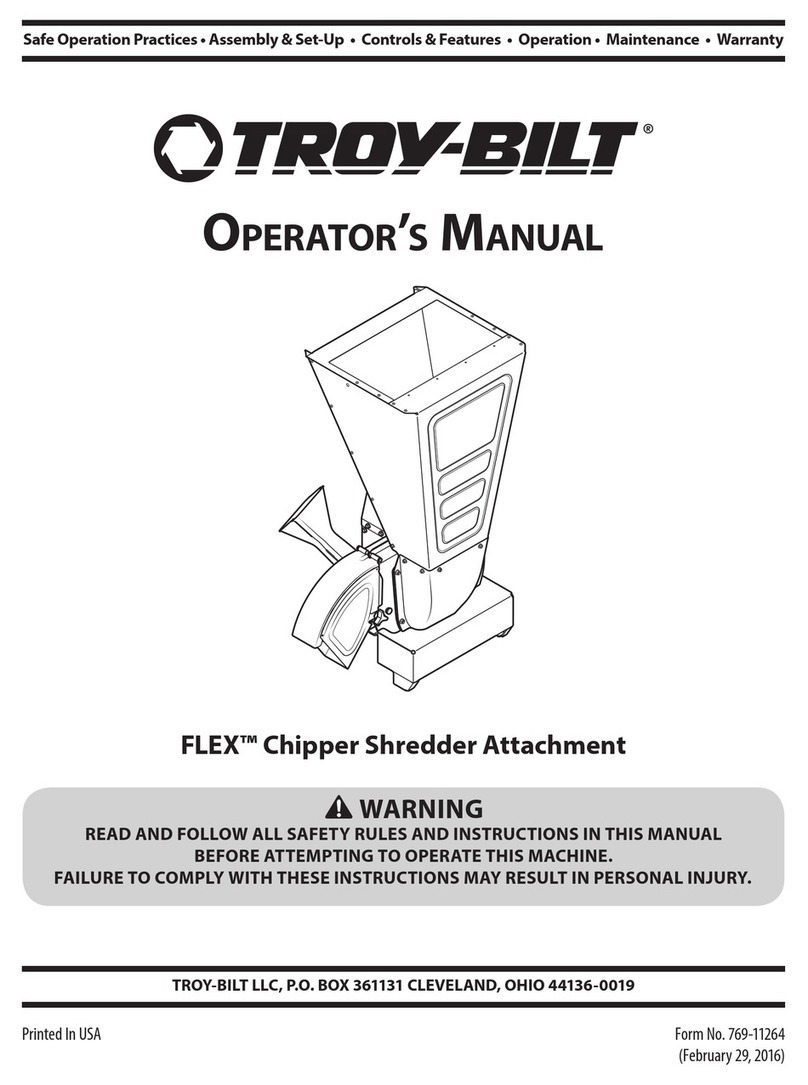
Troy-Bilt
Troy-Bilt FLEX Chipper Shredder Operator's manual
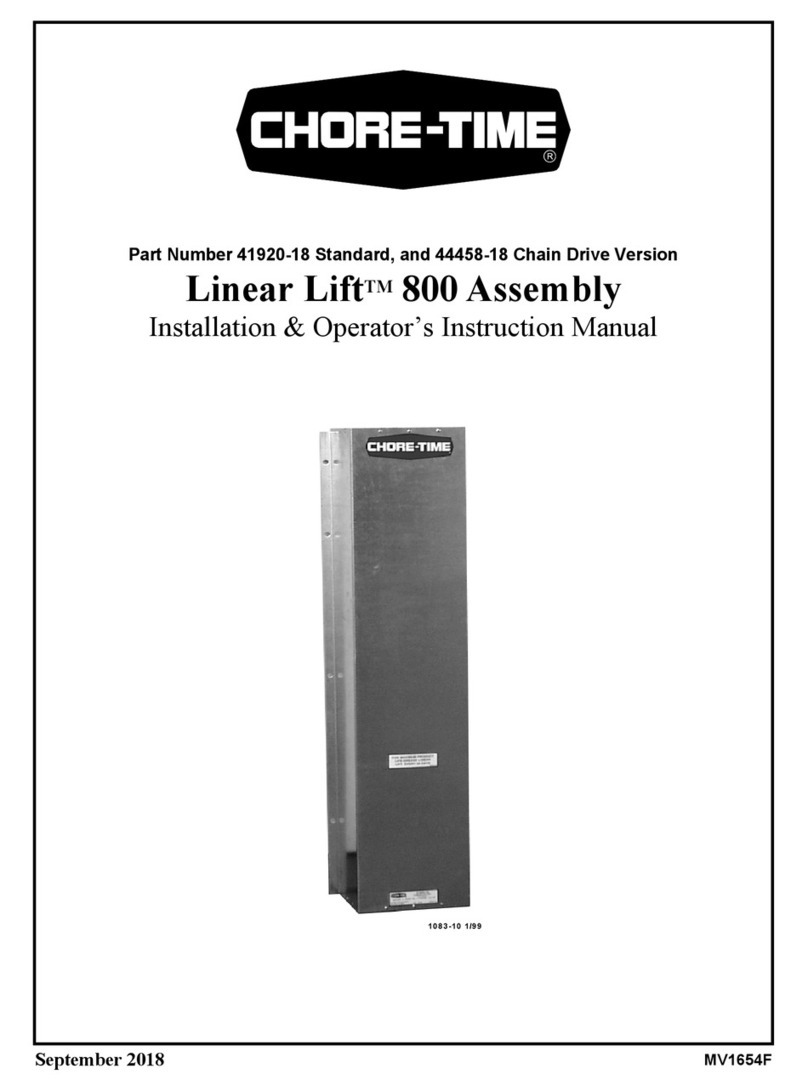
Chore-Time
Chore-Time Linear Lift 800 Installation & operator's instruction manual
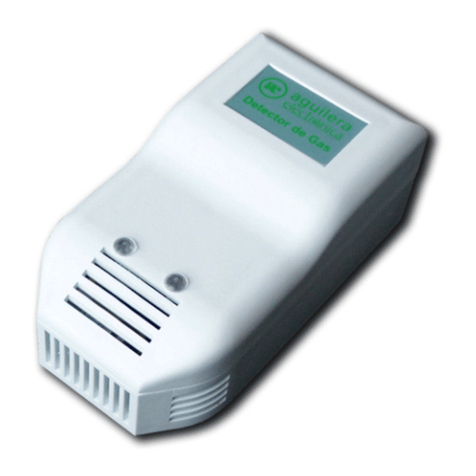
aguilera
aguilera AE09/GM-12 user manual
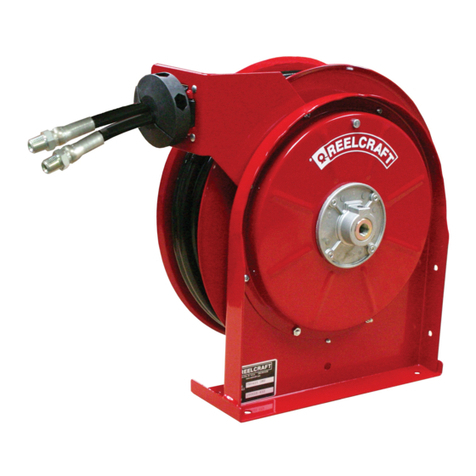
ReelCraft
ReelCraft TH5425 OMP operating instructions
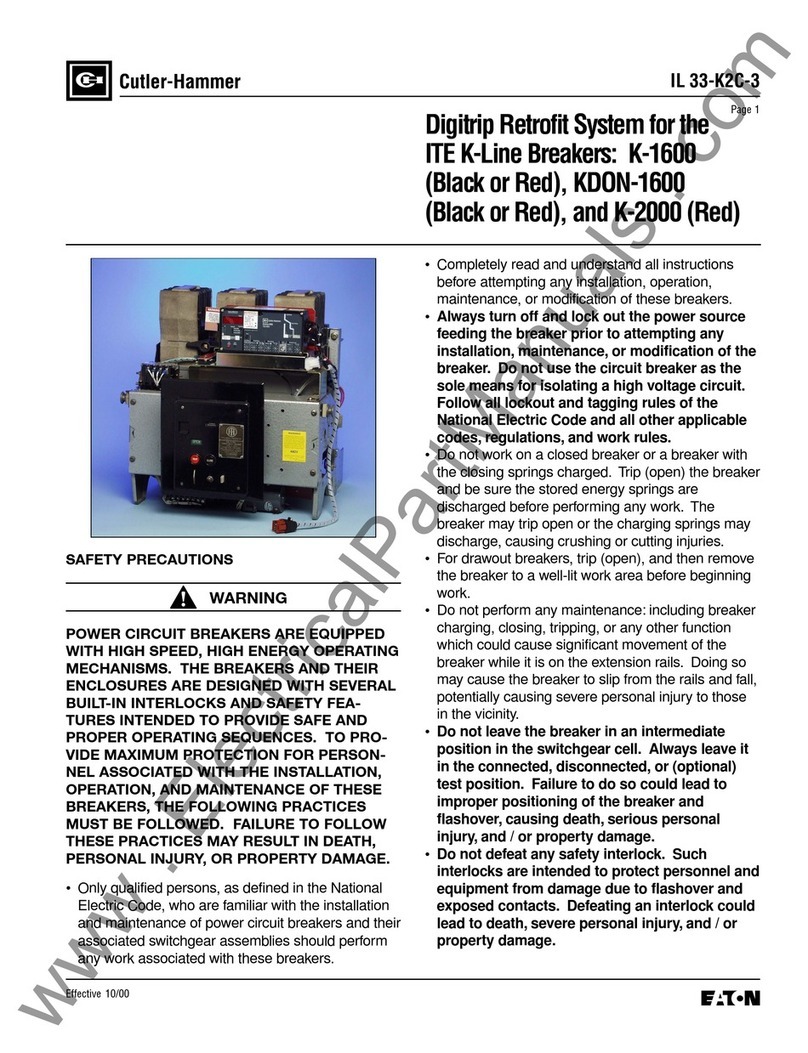
Eaton
Eaton digtrip 510 with zone Interlock Installation, operation and maintenance
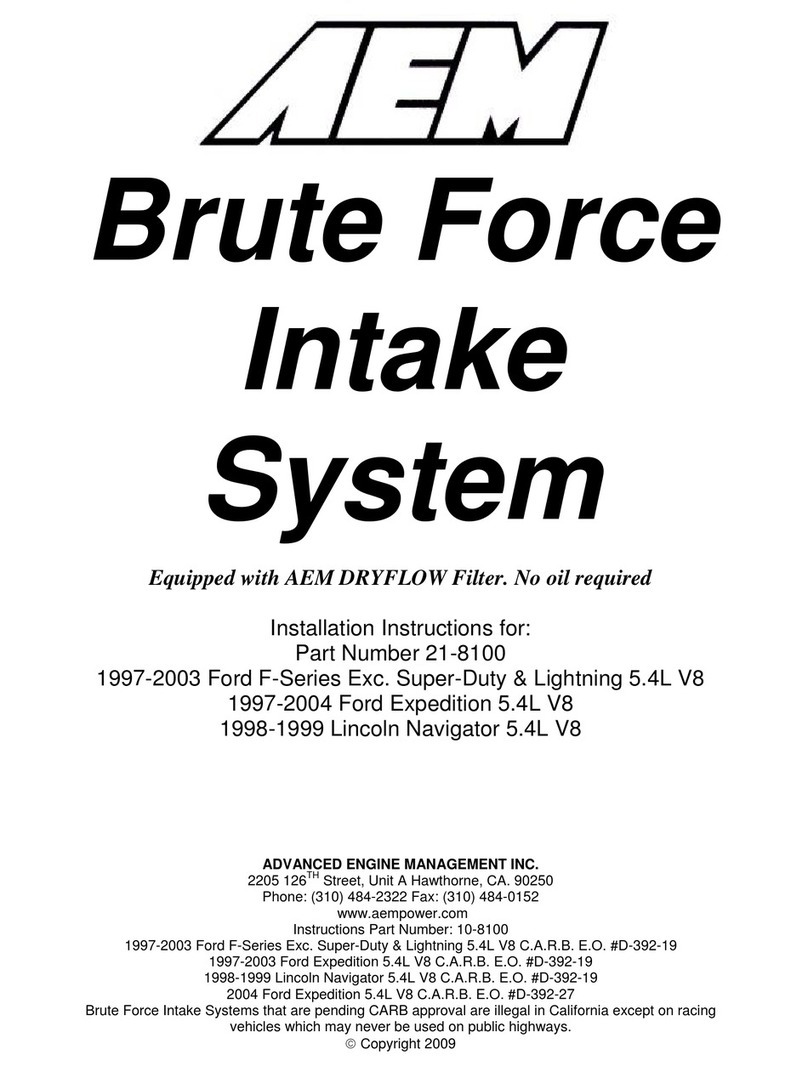
AEM
AEM 21-8100 Installation instructions manual
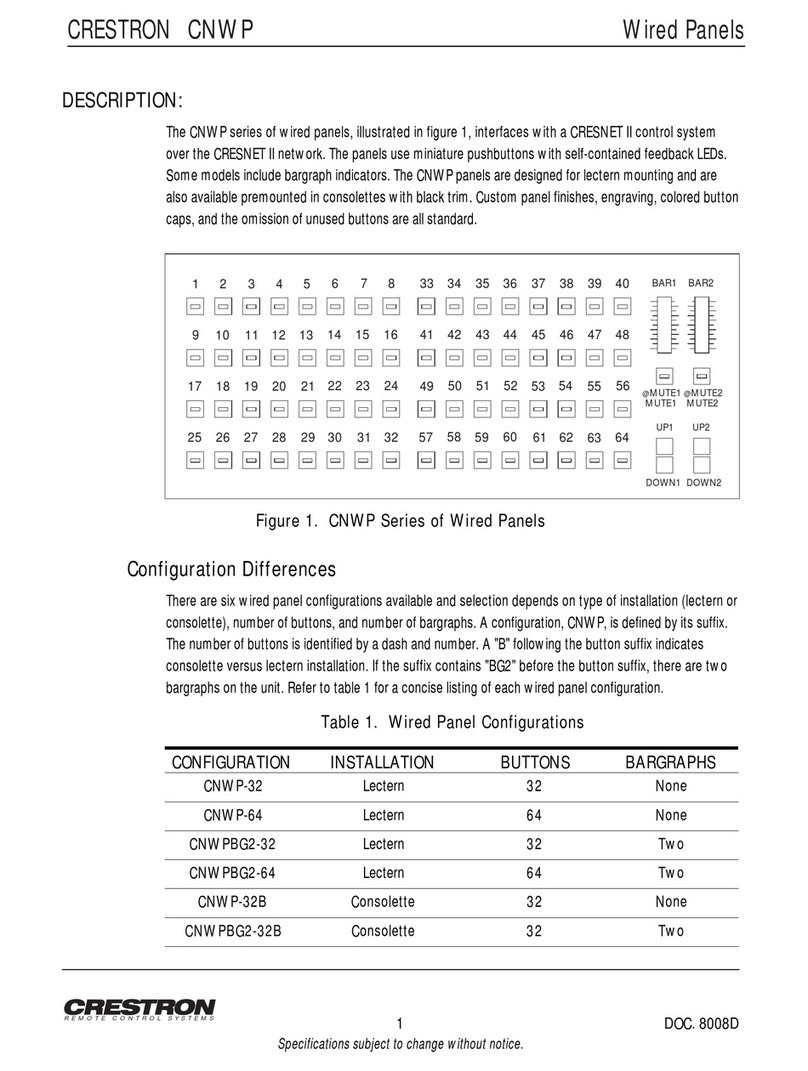
Crestron
Crestron CNWP-32 user guide
